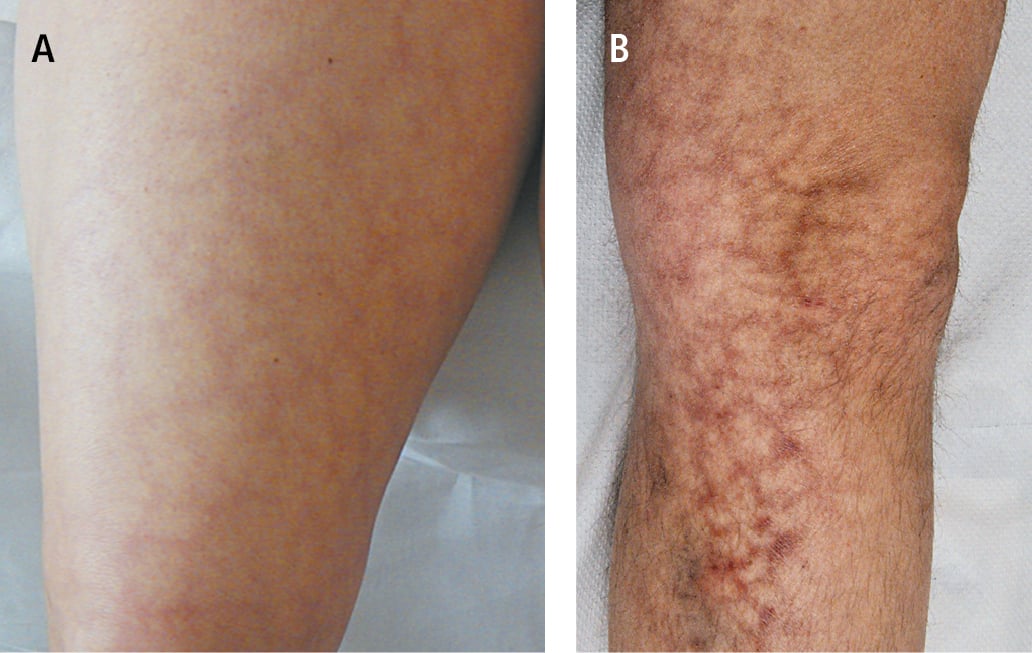Definition and EtiologyTop
Livedo reticularis is a vasomotor disorder involving the skin of the extremities or less commonly the trunk. It leads to persistent unevenly disseminated vasoconstriction affecting the arterioles and concomitant congestion and dilation of venules filled with deoxygenated blood, which results in a mottled reddish or blue discoloration of the skin (Figure 3.19-1). It is most frequently a cosmetic defect rather than a disease, but a similar process may accompany a variety of systemic diseases (livedo racemosa).
Etiologic classification:
1) Idiopathic and primary livedo reticularis: Physiologic (mainly on the lower extremities, resolves completely after warming up the limb); primary (independent of ambient temperature); idiopathic (does not decrease with warming; most frequently affects women aged 20-60 years).
2) Secondary livedo reticularis (livedo racemosa), including antiphospholipid syndrome (most frequently), cryoglobulinemia, Sneddon syndrome, polycythemia vera, cold agglutinin disease, systemic connective tissue diseases (especially systemic lupus erythematosus), peripheral embolism (cholesterol [eg, after endovascular intervention] or bacterial embolism), diabetes mellitus, or coronavirus disease 2019 (COVID-19) infection or vaccination.
DiagnosisTop
Diagnosis is based on history and physical examination. In some cases (eg, in patients with a history of venous or arterial thrombosis) determine the presence of lupus anticoagulant and anticardiolipin antibodies to exclude antiphospholipid syndrome. Appropriate investigations to exclude secondary causes (listed above) are warranted.
TreatmentTop
Treatment is not necessary unless there is an underlying condition that needs therapy. Exposure to cold should be avoided.
FiguresTop

Figure 3.19-1. A, livedo reticularis. B, livedo racemosa. Figure courtesy of Dr Leszek Masłowski.